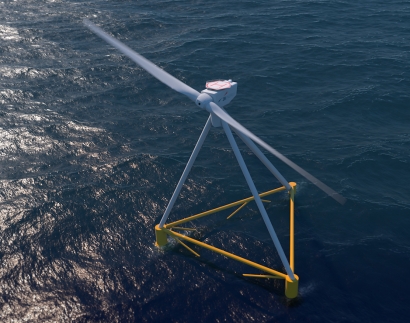
NextFloat project main objectives are to demonstrate a competitive, sustainable and integrated floating offshore wind solution optimized for deep waters and to accelerate the industrial-scale deployment of floating offshore wind.
The integrated solution relies on X1 Wind innovative and disruptive floating offshore wind technology, allowing for a lighter floater design and a reduced steel requirement, as well as a more efficient and compact mooring system, ultimately minimizing the impact on seabed.
The project includes the deployment of a full scale 6MW prototype at Mistral test site in the French Mediterranean Sea in order to demonstrate the concept in operational condition. It is enabled by the participation of the Open-C foundation which structures and operates all the test sites for marine renewable energies and offshore wind power in France.
The integrated system design, its manufacturing, assembly and installation procedures will thus be tested at a scale that is relevant for the upcoming commercial offshore wind farms, that will require industrialized solutions for applications in excess of 15MW and beyond.
Laure Mandrou, SVP Carbon-Free Energy solutions of Technip Energies, commented, “We are glad to have been selected for the NextFloat project, as part of the Horizon Europe program. By leveraging our existing collaboration with X1 Wind, we are preparing the future of the floating offshore wind market and accelerating the development of disruptive floating offshore wind solutions at industrial scale.”
Alex Raventos, CEO and co-founder of X1 Wind, said: “We are really pleased to have the opportunity to deliver our unique solution through the NextFloat. This ambitious project aims to bring substantial improvements in the competitiveness of floating wind and prepare the long-term mass deployment of this industry, so that we can actively contribute to accelerate the energy transition, which together with energy security is becoming more and more critical in Europe and worldwide”.
Additionally to Technip Energies and X1 Wind, the consortium also counts with the participation of Naturgy, 2B-Energy, Hellenic Cables, Ocean Ecostructures, Schwartz Hautmont, Tersan Shipyard, Ecole Centrale de Nantes, Ocas, Hydro and the Technical University of Denmark. The grant agreement is currently under negotiations with the European Commission and the project is expected to start in the 4th quarter of 2022.

